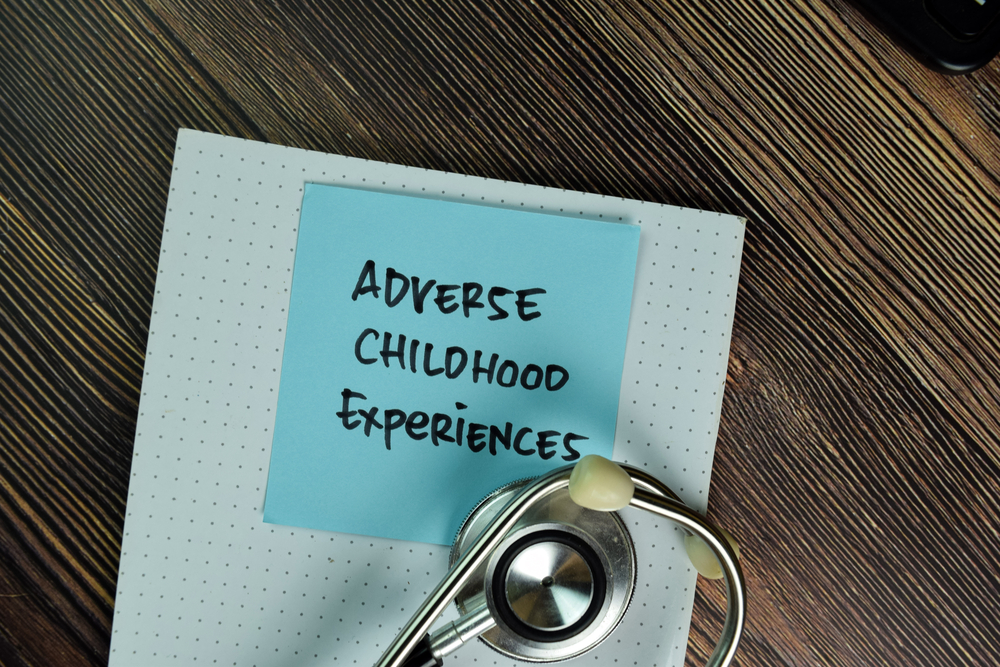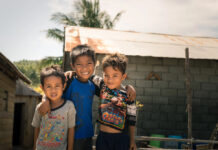In a new article published in the American Journal of Preventative Medicine Focus, researchers lay out the American College of Preventative Medicine’s (ACPM) position on preventing and mitigating adverse childhood experiences (ACEs). While the authors endorse surveillance and research around childhood adversity, they recommend against screening for adverse childhood experiences in individual clinical encounters.
Through a synthesis of research and expert opinion, they put forward seven recommendations for preventing and assisting in recovery from adverse childhood experiences. They write:
“The American College of Preventive Medicine offers seven adverse childhood experiences‒related recommendations focused on screening, education/training, policy/practice, and research: 2 are evidence-based, and five are based on expert opinion. Notably, regarding secondary prevention of adverse childhood experiences, the American College of Preventive Medicine endorses population-level surveillance and research around childhood adversity but not adverse childhood experience screening in individual clinical encounters.”
 The goal of the current research was to address three key questions (KQ):
The goal of the current research was to address three key questions (KQ):
- Is there evidence that the effects of adverse childhood experiences can be prevented or mitigated?
- Is screening for adverse childhood experiences associated with various benefits, including improved health outcomes?
- What is the effectiveness or harm of interventions for elevated adverse childhood experience scores?
To accomplish this goal, the authors investigated eight systematic reviews comprising 260 total studies. The authors also included expert recommendations from 6 professional organizations dealing with adverse childhood experiences.
Studies from 2014 to 2021 were included in the initial review if they addressed the population relevant to each KQ. For KQ1, studies that included children under 18 years of age with and without a history of childhood adversity were reviewed. For KQ2, the authors looked at studies that included children and adults. For KQ 3, they looked at children and adults that scored four or higher on a survey of childhood adversity, as this score is typically the cutoff for ACE intervention.
Both direct measures of health, as well as proxy measures (coping skills, internalizing behaviors, etc.) were considered in accessing the relationship between strategies, interventions, and outcomes. The studies were further refined using keywords and medical subject heading terms. Finally, researchers refined the remaining studies by reviewing titles and abstracts to arrive at eight systematic reviews comprising 260 studies and 340,450 participants.
Concerning KQ1, the current research finds that while some avenues for preventing and mitigating ACE seem promising, there is a lack of evidence for clinical or community strategies to accomplish this goal. This holds true for both participants that had already dealt with ACE as well as those that had not.
Concerning KQ2, the authors find limited evidence for the efficacy of ACE screening. While there is evidence that screening could be helpful if adequate interventions existed for ACE, there is not strong or consistent evidence that screening reduces the adverse outcomes of ACE.
Concerning KQ3, the present study finds that school-based mental health promotion programs positively impacted ACE. These programs showed an increase in student resilience and protective factors (such as enhanced coping skills). While there were some positive findings, overall, there is limited evidence for the efficacy of most of the interventions reviewed for children that had experienced childhood adversity. The intervention with the strongest link to positive outcomes was cognitive behavioral therapy for children that had been sexually abused.
After reviewing these studies as well as expert opinions on ACE, the authors arrive at seven recommendations for the treatment and mitigation of ACE:
- Increased surveillance and research around ACE that does not include individual screening in clinical encounters.
- Sensitive trauma inquiry through primary care providers in the context of therapeutic relationships and shared decision-making.
- Training for healthcare teams on the impacts of ACE throughout the lifespan.
- Public and private health plans should include incentives for universal precautions, trauma-informed approaches, and evidence-based treatment for ACE.
- State and county-level policymakers should develop and fund initiatives to provide evidence-based resources for children.
- Federal agencies should fund research around the prevention, mitigation, and treatment of ACE, as well as protective factors and positive childhood experiences that promote healthy development in children.
- Health systems should conduct a rigorous evaluation of the implementation of trauma-informed approaches for patients with a history of ACE.
Five of these seven recommendations are based on expert opinion rather than solid evidence. The remaining two are based on “limited quality evidence,” according to the authors of the current work. None of these recommendations have robust and consistent evidence to support their efficacy.
The authors acknowledge several limitations to the current work. First, the studies reviewed were limited to 8 years and may have missed reviews produced before 2014. Although the authors used an umbrella review, they neglected some of the standard practices typical in such research (such as developing a prespecified protocol, estimating common effect size, etc.). Finally, the systematic reviews explored only the benefits of ACE screening without addressing the harms (such as retraumatization). Finally, the present research was limited to English language studies and neglected approaches and data not published in English.
Much of the psy-discipline’s current understanding of ACE comes from the CDC-Kaiser ACE Study, an extensive investigation of the repercussions of childhood abuse and neglect. The present research is partly an attempt to implement those findings into healthcare protocols. While some authors have lamented that we have not incorporated the lessons from this research into societal care, others argue that the data is essentially unusable as the survey score does not correlate with trauma effects (among other problems).
Recent research has linked ACE to higher anxiety in college students. ACE has also been linked to chronic illness and depression, schizophrenia, psychosis, ADHD, and bipolar disorder.
****
Sherin, K. M., Stillerman, A. J., Chandrasekar, L., Went, N. S., & Niebuhr, D. W. (2022). Recommendations for population-based applications of the adverse childhood experiences study: Position statement by the American College of Preventive Medicine. AJPM Focus, 1(2), 100039. https://doi.org/10.1016/j.focus.2022.100039 (Link)















Sounds like just more Big Brother.
Powerful organizations always try to fix things after the fact, and can’t see how perhaps they and society are part of the problem.
Children and adults need emotional support from people who truly care about their wellbeing, but not from prying professionals paid to police their private lives.
Report comment
Agreed Birdsong. Fixing ACE is not easy, as it requires fixing our whole culture. Adverse Childhood experiences happen in a disconnected environment, and our culture is very disconnected. Bad things will always happen to children, but if the children are imbedded in a community of caring adults the impact of those bad things will be much less. In fact, in that context the impact of bad things would be to build resilience in children. (or to use Nassim Talib’s term “anti-fragile”) However, building a community of caring adults is a multi generational project with a much different value system at its core that our society has at present.
Report comment
Given the fact that no “mental health” worker may ever honestly bill to help a child abuse survivor, according to their DSM billing code “bible.”
https://www.psychologytoday.com/us/blog/your-child-does-not-have-bipolar-disorder/201402/dsm-5-and-child-neglect-and-abuse-1
And given the fact that the psychological and psychiatric industries, and even some mainstream doctors, have been covering up child abuse on a massive societal scale, for decades or centuries.
https://www.indybay.org/newsitems/2019/01/23/18820633.php?fbclid=IwAR2-cgZPcEvbz7yFqMuUwneIuaqGleGiOzackY4N2sPeVXolwmEga5iKxdo
https://www.madinamerica.com/2016/04/heal-for-life/
When it comes to ACEs survivors, keeping child abuse survivors as far away as possible from the “mental health” system, is the best course of action.
But we should fund someone willing help child abuse survivors. And our society should start to arrest the pedophiles … maybe that’s finally starting to happen? … out of embarrassment? Let’s hope.
Report comment